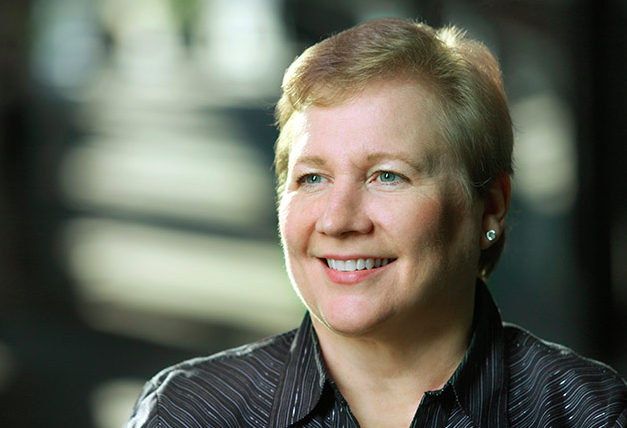
Lillie Shockney, administrative director of the Johns Hopkins Breast Center and two-time breast cancer survivor, and Susan Harvey, M.D., director of Johns Hopkins Breast Imaging, receive many questions about how to interepret common findings on a mammogram report. The intent of the report is a communication between the doctor who interprets your mammogram and your primary care doctor. However, this report is often available to patients and misinterpreted. Here are answers to 10 of the most commonly asked questions by patients:
Q: What are calcifications?
A: Calcifications are calcium deposits in the breast tissue. They are very common, and the great majority are noncancerous. When many microcalcifications (tiny specs of calcium) are seen in one area, they are called a group.
Q: What are clip markers, and why are they used during biopsies?
A: After a mammogram screening, a small percentage of women will have a finding that may require additional diagnostic imaging. This is called a recall. If a patient is recalled, additional imaging will be performed, and only about 2 percent of women may need a biopsy. During a biopsy, a radiologist with breast imaging expertise inserts a small metallic clip in the breast to help locate the biopsy site in case further testing is needed.

Q: What is BI-RADS?
A: The Breast Imaging-Reporting and Data System (BI-RADS) is a reporting and assessment system required by the federal government. This is a dictionary that radiologists use to describe findings in a breast imaging report. This system also organizes assessments and explains the importance of the findings. The assessments range from 0 to 6, with 0 indicating an incomplete mammogram report, meaning more imaging is needed before a final decision about the findings can be made, and 6 indicating there is a known breast cancer diagnosis. The assessments are used to share the appropriate next steps or recommendations with doctors.

Q: Is tomosynthesis (3-D mammography) a better screening tool?
A: Yes. Compared to a 2-D mammography, tomosynthesis provides a clearer image of each layer of the breast, which provides greater visibility for the radiologist. This allows more cancers to be seen and fewer false alarms; this is a state-of-the-art, improved mammogram.
Q: Should I get a breast MRI scan instead of a mammogram?
A: A breast MRI scan can be used for additional testing, but it should not be used as a substitute for a mammogram. MRI scans are typically used for the following:
- High-risk screening for patients with more than a 20 percent chance of developing breast cancer in their lifetimes
- Bloody or clear nipple discharge
- Preoperative testing
- Chemotherapy follow-up
Q: What should I do if I notice abnormal changes or symptoms even after my mammogram comes back normal?
A: Breast self-exams are important because they allow you to get to know your breasts and their “normal.” If you notice abnormal symptoms or changes to your breast geography, request additional testing. Do not ignore abnormal breast changes or symptoms, such as discharge or a lump, but keep in my mind that several lifestyle changes, such as weight gain, weight loss, hormone changes and hormone replacement therapy, can cause your breasts to change.
Note: Your doctor may call you back after a baseline mammogram (a patient’s first mammogram) for additional testing because he or she has nothing to compare the mammogram to. This will also help identify changes to your breasts over time.
Q: If I am diagnosed with breast cancer, should my children get mammograms at an earlier age?
A: Yes, but depending on the child’s age, an ultrasound or breast MRI scan may be a better option. Consult with your family physician.
Q: What does asymmetry mean in my mammogram report?
A: Breast asymmetry refers to the comparison of the breasts. A radiologist will examine a mammogram to look at the difference in position, volume and form of the breasts. In most cases, the breasts are generally symmetric in their density and architecture, but sometimes a report may reveal asymmetric density, which is common and usually noncancerous. However, a radiologist may decide to do further testing if there are changes in breast tissue that are asymmetric, as this could also indicate an important finding.
Q: What does fibroglandular density mean?
A: Fibroglandular tissue refers to areas in the breast containing milk glands and milk ducts. Fibroglandular density refers to scattered areas of density in the breast, which is normal tissue seen in combination with fat.
Q: My mammogram described my breasts as being “heterogeneously dense, which may obscure small masses.” What does that mean?
A: This means that you have moderately dense tissue, which is common and not a cause for concern. Sometimes, dense tissue can make it difficult to accurately read a mammogram. Your doctor will review over different screening options with you, if necessary.

